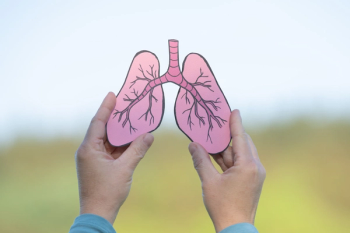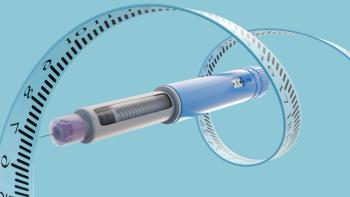
All Pharmacies Are Not the Same: Community Pharmacy Quality
Patients and other stakeholders need to be able to compare pharmacies based on standardized, transparent metrics with a measurement system to make informed decisions.
The books have closed on 2023 and to say it was a tumultuous year for pharmacy would be an understatement. Chain pharmacies saw pharmacists’ walkouts, bankruptcies, and store closures.1 There were investigative journalistic inquiries into chain pharmacy staffing and patient safety.2 Independents felt the egregious product reimbursements from pharmacy benefit managers, which intensified with the increased use of name brand medications (e.g. glucagon-like peptide [GLP]-1s) while also preparing for the direct and indirect remuneration (DIR) cliff of 2024. It seemed the underpinning of our once stable profession stood on wobbly legs.
The underlying question, and in fact the overall most important question is: “What about patient safety?” In this country, non-optimized medications cost the system well over $500 billion.3 Pharmacists and their staff are underutilized and underpaid for their unique knowledge, training, social, and clinical skills to help patients optimize their medications. The current reality in our profession is that community-based pharmacy is about ready to implode and with it a loss of a learned, skilled professionals who have been a trusted source of health care for their communities.
All pharmacies are not the same. Some pharmacies have put their focus on efficient dispensing services, emphasizing prescription volume over patient care. Some pharmacies struggle to transform their practices to provide patient care due to insufficient resources, leading to professional burnout and sub-standard care of patients. And yet, there are those pharmacies that have been able to successfully shift their practice models to provide enhanced patient care services, which have not only helped them to survive in these turbulent times but thrive.
If, indeed, all pharmacies are not the same, how does a patient know which pharmacy to choose? Historically, and currently, pharmacies have touted lower prices, convenience, and shorter wait times.These so-called practice metrics have been shouted from the rooftops as measures of quality of a pharmacy, yet are of much less importance in today’s health care environment that rewards providers for patient quality outcomes, safety, and cost-effectiveness.
Patients and other stakeholders need to be able to compare pharmacies based on standardized, transparent metrics with a measurement system to make informed decisions. Pharmacies, as in other parts of health care, need to adhere to and be compared using a standard set of measures based on quality of care—not speed of dispensing or the cost (cheapness) of drugs. In that way, patients could choose the pharmacy with a patient safety profile that best fits their personalized health care needs.
Convenience and access can still be maintained and promoted by the pharmacies, but their ability to affect quality patient outcomes should become the driver of decisions.
Better Pharmacies Save Lives
What makes one pharmacy better than the next? Ask that question of a pharmacist or pharmacy technician and safety will most likely be their answer. The better pharmacy is the safer pharmacy. This was the concept that launched Seguridad. Seguridad (Spanish for safety) created a measurement system for community pharmacies based on patient safety. Appropriately named “Choose My Pharmacy,” this system is comprised of 18 community pharmacy quality measures, listed in Table 1 below. As this system is implemented and utilized within community pharmacies, it allows for standardized comparisons between pharmacies, encourages continuous quality improvement in pharmacy practices, and creates a safer health care system for patients, thereby saving health care dollars for all payers.
Kids Need Better Pharmacies
One Seguridad-developed Choose My Pharmacy measure, Assessment of Weights in Pediatrics, evaluates the percentage of pediatric patients (under 17 years of age) for whom the pharmacy maintains a documented weight. What’s the significance of having this data at the pharmacy? Research shows 60% of pediatric antibiotics are dose incorrectly by the prescriber.4 As any pharmacist or pharmacy technician can tell you, pediatric antibiotics are dosed by weight. Without a weight on file, the pharmacist cannot check correct dosing. Ensuring the right dose is a minimum standard by which all pharmacists should be evaluating every prescription drug order prior to dispensing.5
A business case also exists for the investment in tracking patient weight. Assuring correct dosing of otitis media prescriptions in pediatrics, a self-insured employer with 1000 employees could save over $20,000 annually.6,7,8 Safety, overall health care costs savings, and improved outcomes all tied back to a simple on-file weight in response to following a Choose My Pharmacy quality measure.
There are 17 other safety measures, and more being developed. The impact of implementing pharmacy quality measures is staggering.
Developing a Pharmacy Quality Measure
Community pharmacy quality measures do not just appear organically. It requires time, effort, data, and implementation science to produce these measures. To develop a measure that is relevant, reliable, and utilizable, Seguridad relies on multiple standards set out by the National Quality Forum, Centers for Medicaid and Medicare Services, and others. These standards can be grouped into 5 general domains: Data Source, Measurement System, Attribution, Measured Population and Level of Analysis (Table 2).9,10
- Data Source: The specification of a quality measure should be based on the data available for the intended use. For example, hospital quality measures level electronic medical records, employee data (vaccination rates), and patient surveys. These data are not appropriate for a health plan quality measure, just as health plan data is not appropriate for a pharmacy measure.
- Measurement System: A quality measure is only as good as it is used/implemented within a measurement system.
- Attribution: Oftentimes, a confounder for a quality measure’s performance is how external forces impact the measure. For example, when a patient switches insurance from Medicaid to Medicare, how does this influence the patient’s health outcomes? And as such, from a pharmacy’s perspective, which payor is attributed for these outcomes?
- Measured Population: A good quality measure should be as inclusive as possible. This provides a large denominator in the quality measure which increases the reliability of the measure. Developing a measure for a narrow population (ex. percent of left-handed, Hispanic pharmacists with asthma) doesn’t support quality.
- Level of Analysis: This is crucial and intimately tied to data source. If a hospital is being evaluated for quality, use hospital data. If a pharmacy is being evaluated for quality, use pharmacy data. Prescription Data Events (PDE) or claims data are not pharmacy data, and as such do not make a good data source for pharmacy level of analysis.
Using Pharmacy Quality Measures Today
Seguridad’s pharmacy quality measures and the measurement system Choose My Pharmacy have the potential to drive value-based agreement (VBA) contracting and innovative pharmacy services as evidenced in Table 3. Pharmacies utilizing state-of-the art quality measures to ensure patient safety and quality health care can drive down costs by improving not only outcomes but quality of life for patients.
The product distributed by a pharmacy, the physical medication itself, will always be a commodity. That part of the equation does not lend itself to value-based contracting and leans more to fee-for-service. As is evidenced by current, low reimbursement, below-cost drug pricing calculations by payers, and the DIR cliff, relying on dispensing to support a practice is not sustainable.11 Providing quality-based services, improving health outcomes, closing health care gaps, and providing outreach to marginalized patients is not only sustainable but vital. These services must, however, be based on standard quality measures that provide a ruler (or measurement system) by which to measure and pay providers.
CPESN Health Equity: Ahead of the Curve
The Community Pharmacy Enhanced Service Network (CPESN) special purpose network, CPESN Health Equity, is currently using the Choose My Pharmacy system across their entire membership. CPESN Health Equity is comprised of more than 200 pharmacies across the country who have committed to provide care with a special emphasis on underserved and marginalized patients. These pharmacies have committed to have a specialist in social determinants of health on staff to address the needs of the sickest and neediest of patients. Each of these pharmacies reports data to Choose My Pharmacy for evaluation, analysis, and reporting to improve their individual practices and provide better patient care. In the VBA funding world of payers, state contracts, grants, and community outreach, being able to relate the quality of a pharmacy network can speak volumes.
Change has come to community pharmacy. Like it or not, 2024 will be a year unlike any the profession has seen. To thrive, pharmacists will need to provide new services, both clinical and social. Payers are even now looking for pharmacies which provide those types of services. Payers, just like the general public, until now had no way to compare pharmacies on anything other than price. Choose My Pharmacy offers pharmacies a way to ensure quality improvement and stand out, because all pharmacies are not the same.
References
1. Goodkind N and Rothenberg E. CVS and Walgreens pharmacy staff begin 3-day walkout. https://www.cnn.com/2023/10/30/business/cvs-walgreen-pharmacy-walkout/index.html . October 30, 2023
2. Le Coz E. Prescription for disaster: America’s pharmacy system in revolt over burnout and errors. https://www.usatoday.com/story/news/investigations/2023/10/26/pharmacy-chains-dangerous-conditions-medication-errors/71153960007/ . October 26, 2023.
3. Watanabe JH, McInnis T, Hirsch JD. Cost of Prescription Drug-Related Morbidity and Mortality. Ann Pharmacother. 2018 Sep;52(9):829-837. doi: 10.1177/1060028018765159. Epub 2018 Mar 26. PMID: 29577766.
4. Holder K, Oprinovich S, Guthrie K. Evaluating pediatric weight-based antibiotic dosing in a community pharmacy. J Am Pharm Assoc (2003). 2023 Jul-Aug;63(4S):S52-S56. doi: 10.1016/j.japh.2022.12.011. Epub 2022 Dec 11. PMID: 36588061.
5. Pharmacists’ Impact of Patient Safety. https://www.pharmacist.com/Portals/0/PDFS/Practice/PharmacistsImpactonPatientSafety_Web.pdf?ver=dYeAzwlN3-PG9eSkMMsV-A%3D%3D . American Pharmacists Association White Paper. 2015.
6. G&A Partners. https://www.gnapartners.com/resources/infographics/working-parents-the-american-workforce
7. Statista. https://www.statista.com/statistics/718084/average-number-of-own-children-per-family
8. BCM Pediatrics. https://bmcpediatr.biomedcentral.com/articles/10.1186/s12887-016-0638-2
9. Measurement Systems: A Framework for Next Generation Measurement of Quality in Healthcare. NQF Whitepaper. March 2019.
10. Measure Evaluation Criteria. http://www.qualityforum.org/Measuring_Performance/Submitting_Standards/Measure_Evaluation_Criteria.aspx. 20200504
11. Wiener-Bronner D. Drugstore closures could make pharmacy deserts even worse. https://www.cnn.com/2023/11/06/business/drugstore-closures-pharmacy-deserts/index.html . November 2023.
Newsletter
Stay informed on drug updates, treatment guidelines, and pharmacy practice trends—subscribe to Pharmacy Times for weekly clinical insights.
















































































































































































































